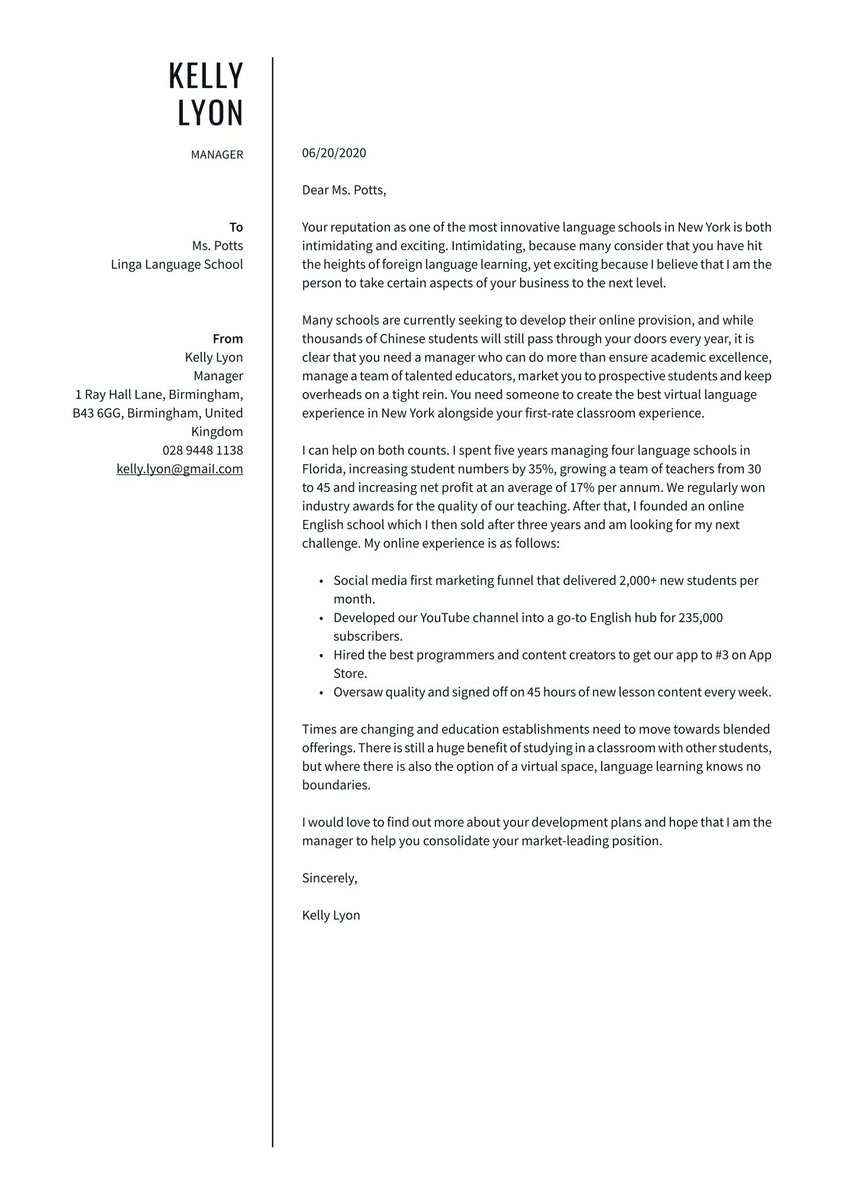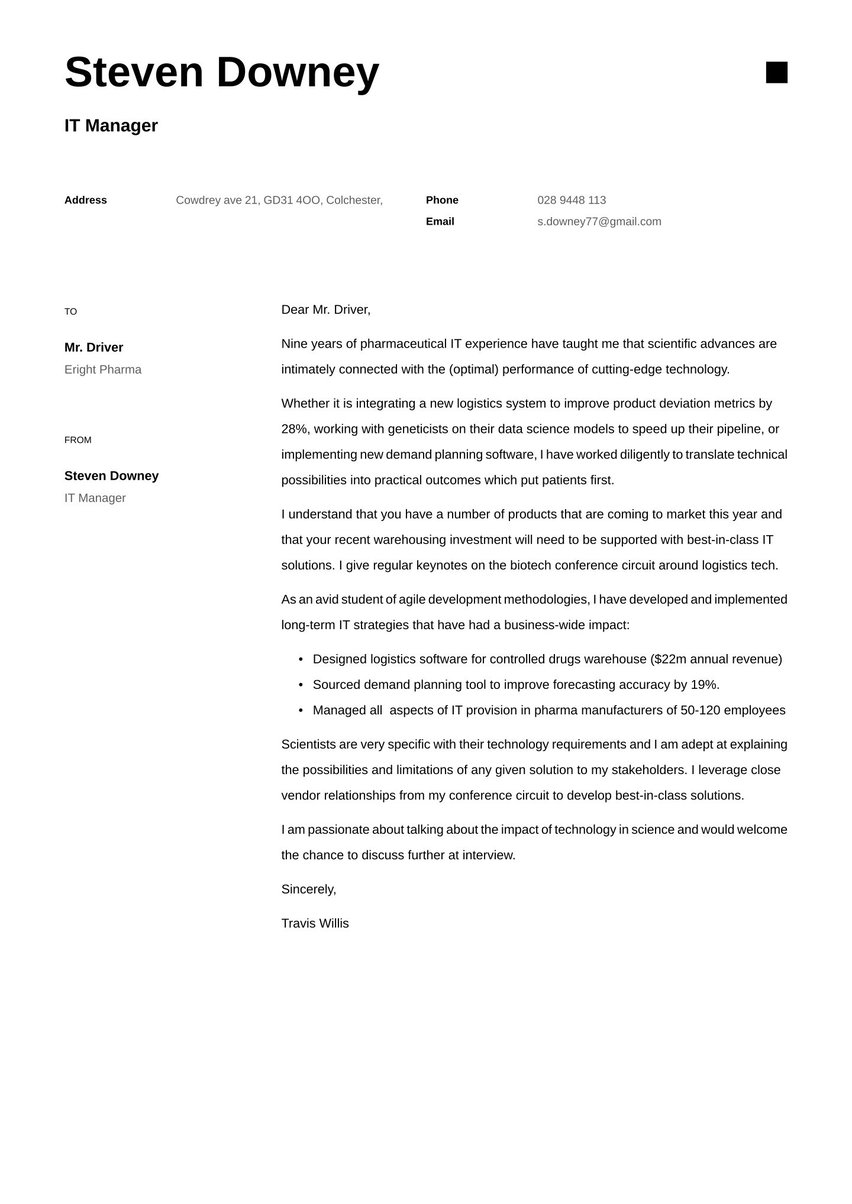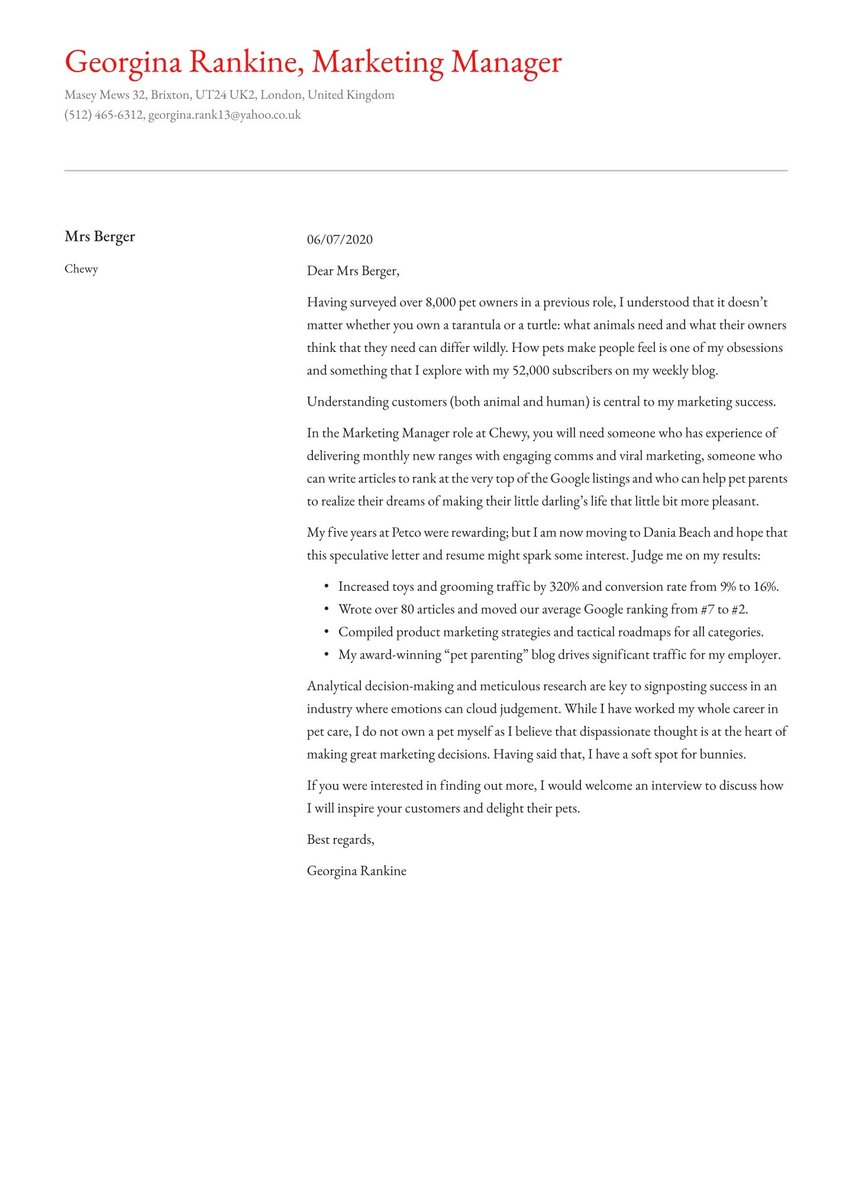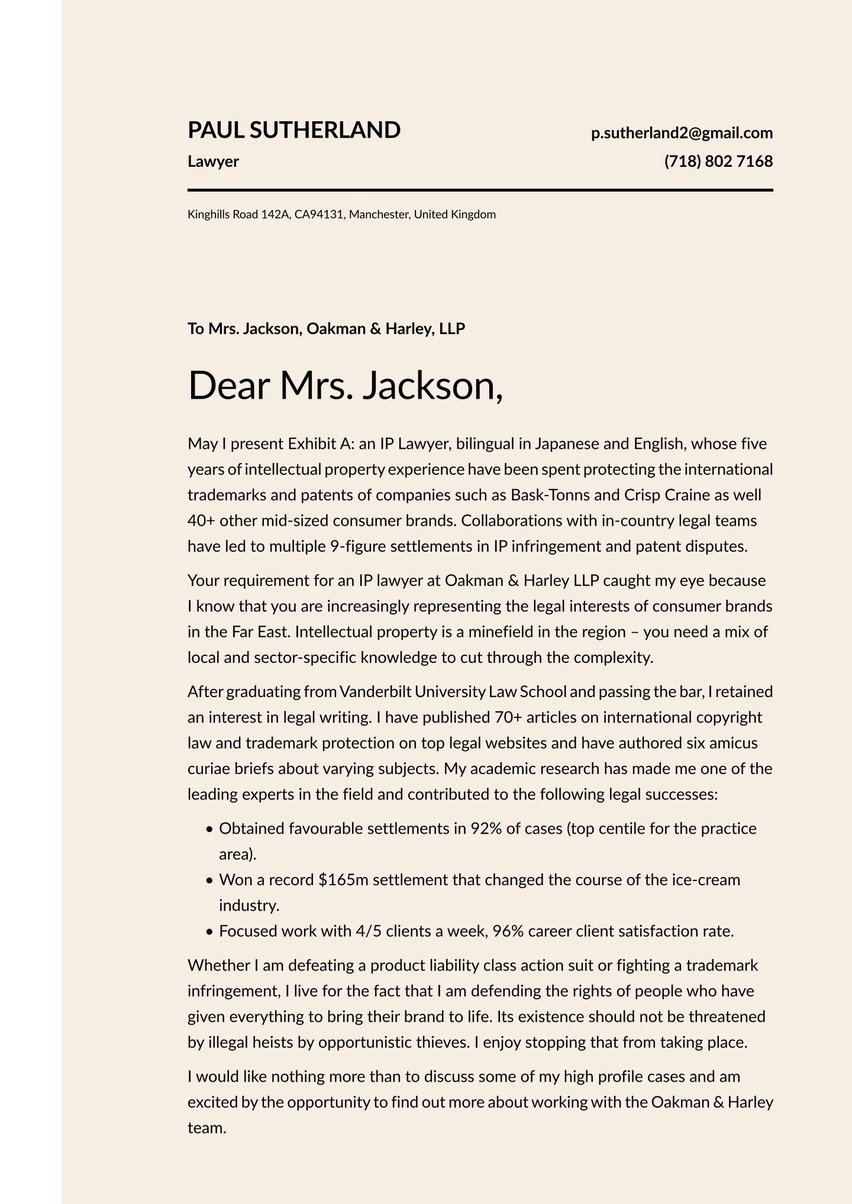You are an HR professional, so there is no need to explain the importance of a cover letter to you. You understand the need to personalise your career story alongside your more factual CV when you are aching to build connections with the HR Director before a potential interview.
While your HR cover letter should outline your unique HR contribution, there is much cover letter advice that will be common to any role. It is often worth looking further afield for inspiration. Our growing library of occupation-specific cover letter examples and writing guides encompasses hundreds of different roles. There are lots of people-related roles among them.
So why are you reading this HR cover letter writing guide? Well, maybe you aren’t quite sure which parts of your story are relevant. It is always worth getting a second opinion. Also, obviously not all HR professionals work in recruitment, so you may not have seen a cover letter for a while. Getting a reminder of the structure and conventions isn’t such a bad thing.
The flip side of this familiarity is that HR Directors will expect to read a stunning cover letter from you. There is no excuse for a half-hearted and rushed effort. Have you reflected the right blend of accomplishments, motivation, and personality? Are you sure that everything that you share is relevant to the role in question? Even HR pros need to tailor their stories — not every HR manager will do the same in every country.
In this writing guide, paired with an adaptable HR cover letter example, we cover:
- The cover letter structure that allows you to highlight the best of your HR career
- Discussing how you achieved things as well as what you did
- How to compose an HR cover letter when you do not have much experience
- Mistakes to avoid — detail matters when you are dealing with people all day.
Best format for an HR cover letter
The format for an HR cover letter should come as no surprise. Like any good story, there should be a compelling overall message, separated into two or three subplots. The introduction should grab the reader’s attention and the conclusion should encourage them to act. Follow the standard format of a cover letter example and you won’t go wrong:
- The cover letter header
- The greeting/salutation
- The cover letter intro
- The middle paragraphs (body of the letter)
- The ending paragraph of your cover letter (conclusion and call-to-action)
The main thing to remember about the letter is to include enough context and quantifiable detail. It is very easy to launch into a people story and leave out the numbers. The best HR professionals understand the impact of their actions on the bottom line. This is how you will set your cover letter apart from the rest. Avoid fluffy language and meaningless adjectives. Make sure that your accomplishments pack a punch.
Once you have a story that you can condense into a page of writing, it is time to think about all the peripheral aspects of writing a cover letter. How do you want the letter to look? What font will you choose? What size of font will work for you? When a potential interview is on the line, it is worth covering every base.
Our HR cover letter sample may offer some ideas:
Dear Mr Johansen,
I am writing in response to your hiring campaign for the Head of Human Resources position at Thompson Recruitment. My experience spans the event management and digital communications sectors and I’m a keen follower of your HR seminars. I am confident I would be a great fit for your working culture.
I started my career in the events space. As an HR representative at VIP Events, I managed the recruitment of several teams in the company’s sales department during an intense period of expansion. I also took a key role in organising the department in my two years in this position. This included helping management to define team functions and facilitating cross-team collaborations. As a result, we successfully streamlined the department and saved 20% of the employment budget while continuing to improve sales and client satisfaction.
The last five years of my career have focused on the digital communications industry, where I have carried out the role of HR manager. I have overseen several HR teams and led company-wide training sessions on agile methodology. In my current role, my job launching a global anonymous mental health hotline for employees led to the company receiving several award nominations.
I am ready for a new challenge and would love to put my skills into practice in a focused and varied HR team such as yours. I hope to hear from you soon to be able to tell you more about myself in an interview.
Sincerely,
Louisa Martinez
Cover letter header
The cover letter header is functional, but it should not be neglected. Include your full name, occupation or job title, email address and phone number. Make sure that you double-check that they are correct!
You should include the same contact information on your matching resume header, as you never know when a hiring manager might want to invite you to an interview. Keep the visual look of the header simple — there is no need for extra colours or oversized fonts.
In terms of your home address, include your city and county, but there is no need for a full home address at this stage (let the employer know it when you have received an offer). There may be data protection issues. Also, do not waste space by including the employer’s inside address – that is an outdated convention that is no longer required.
Cover letter greeting
The greeting of an HR cover letter should be suitably formal. HR members need to be adept at getting these little details right the first time, so start the letter with a standard “Dear Mr/Mrs/Ms Surname.” Resist the temptation to be warm and friendly and call hiring managers by their first name. This should be avoided even if you know them personally — other people will be reading the letter and you don’t want to hint at any kind of favouritism.
There is also no excuse for not finding the name of the recipient. Have a look at the author of the job description and consider calling the company to find out the name of your immediate boss. If in doubt, address the letter to the HR director. These details should certainly be a matter of public record. A quick search on LinkedIn should do the job, but call to double-check as positions can change.
Goal of the cover letter greeting: Establish a professional connection with the HR director in a suitably formal manner.
Cover letter introduction
The introduction of an HR cover letter should feature the biggest “people” impact that you have made in your career — as long as it is relevant for the role in question. Start as you mean to go on. Lead with what you did, how you did it, and why it mattered.
The HR cover letter example should be more about your motivations and personality, so serve your accomplishments with a side of individuality. When you come up against an obstacle, how do you go about solving it? When someone asks you to do something impossible, how do you get as close as you can to their demands? When you need to make a tough decision, how do you find the courage?
HR is one of the most challenging functions because every decision that you make affects your immediate colleagues. Not every decision will be popular, so your HR cover letter should also convey a sense of inner resilience.
If the cover letter introduction makes hiring managers think you are the sort of person who would fit well on their team, they will read on. Take one of the key points in the job description and base your opening salvo upon it.
Goal of the cover letter introduction: Intrigue the reader enough to learn more about your best-matched qualifications for the HR position, while leaving details to be revealed in your CV.
The example below illustrates what an HR cover letter greeting and introduction might look like.
Dear Mr Johansen,
I am writing in response to your hiring campaign for the Head of Human Resources position at Thompson Recruitment. My experience spans the event management and digital communications sectors and I’m a keen follower of your HR seminars. I am confident I would be a great fit for your working culture.
Cover letter middle part (body)
The middle paragraphs of cover letters offer a little more space to expand on your career greatest hits. Do your best not to repeat what you have said in your CV. The hiring manager wants to get a sense of what you are like to work with, how you influence those around you and how you respond to uncertainty and adversity. HR professionals often work under immense pressure to make the right decisions, so show that you can handle it.
When you write the cover letter, try to adopt the “voice” of the company brand that you are seeking to join. If you sound like one of them, they will imagine you in the job already. Have a look at employer branding material and use some of the vocabulary in your story. Find a balance — you equally don’t want to come across as a corporate clone. Check out the tone of the cover letter sample for reference.
Training and development are of ongoing importance for HR professionals, so make sure that you dedicate a sentence or two to your most recent personal development — in areas that matter for the future employer. Show that you are someone with a thirst for learning.
HR professionals will have so much to talk about in this middle section, so don’t be surprised if you run over the required one-pager. Using bullet points to outline your key accomplishments is a good way of saving space — you can use powerful action verbs at the beginning of each bullet to add some character.
Goal of the cover letter body: Elaborate on how this hiring organisation would benefit from your contributions on the HR team.
Here’s a sample of what you might say in the middle part of your HR cover letter.
I started my career in the events space. As an HR representative at VIP Events, I managed the recruitment of several teams in the company’s sales department during an intense period of expansion. I also took a key role in organising the department in my two years in this position. This included helping management to define team functions and facilitating cross-team collaborations. As a result, we successfully streamlined the department and saved 20% of the employment budget while continuing to improve sales and client satisfaction.
The last five years of my career have focused on the digital communications industry, where I have carried out the role of HR manager. I have overseen several HR teams and led company-wide training sessions on agile methodology. In my current role, my job launching a global anonymous mental health hotline for employees led to the company receiving several award nominations.
HR people know all about the delights of applicant tracking systems (ATS) but you never quite know just how much any given employer might use the technology. For certain popular HR roles, it will certainly play a part in the selection, so make sure that you are using the right kinds of keywords and language.
How to close an HR cover letter (conclusion and sign-off)
The conclusion of an HR cover letter should share one last insight into your personality and why the role is right for you. The CV will lay out the facts of your application, so use these last few lines to show what sort of a colleague you will be.
Lastly, mention that you are looking forward to finding out more when you meet for a potential interview. This should be written in hope rather than expectation, but this subtle call-to-action should prompt the hiring manager to invite you for an interview. After all, they don’t know which other opportunities you may have.
Goal of the cover letter closing: End on an optimistic note with a call to action that encourages the employer to follow up.
This conclusion and sign-off comes from our HR cover letter example.
I am ready for a new challenge and would love to put my skills into practice in a focused and varied HR team such as yours. I hope to hear from you soon to be able to tell you more about myself in an interview.
Sincerely,
Louisa Martinez
HR cover letter with no experience
People move into HR from other functions all the time. The HR cover letter is your chance to show that you understand the demands of the role and that you already have relevant experience in large part. Most managers will get involved in plenty of HR-related issues, so it really isn’t so foreign to them. Consider talking about the following if you have no experience:
- Share the exposure that you have had to HR in your previous roles.
- Explore your motivations — why is a move to HR right for you now?
- Show that you possess all the personality attributes required by the role.
- Prove that you have a track record of picking up new things swiftly.
Basic mistakes in an HR cover letter, and how to avoid them
When the well-being of their colleagues is at stake, HR professionals cannot afford to make thoughtless errors. One confidential email sent to the wrong person can cause a scandal. A mistake in payroll calculations may mean people are not paid correctly. Typos in important communications could reflect poorly on the employer. So your mindfulness in this regard is never in question, you should do your best to avoid these basic mistakes in your HR cover letter.
- Double-check spelling and grammar with online software such as Grammarly. You should also ask a friend to proofread the cover letter.
- Don’t use too much HR jargon. The cover letter should be more conversational than the CV. Talk to the hiring manager as if you were in an interview.
- Don’t simply list your job responsibilities. The hiring manager knows what the job entails. They want to understand why you think you have what it takes to do it.
Key takeaways
- Tell a brief but compelling story, which you can then continue at the interview.
- Make the cover letter 100% relevant to the job description. Tailor it.
- Write the cover letter in your own voice and let your personality come through.
- Choose a design that is visually pleasing from our collection of cover letter templates.
Looking for some more inspiration? Check out our related cover letter samples:





























